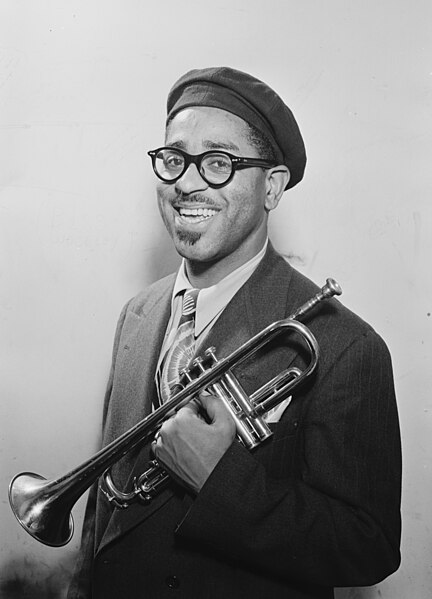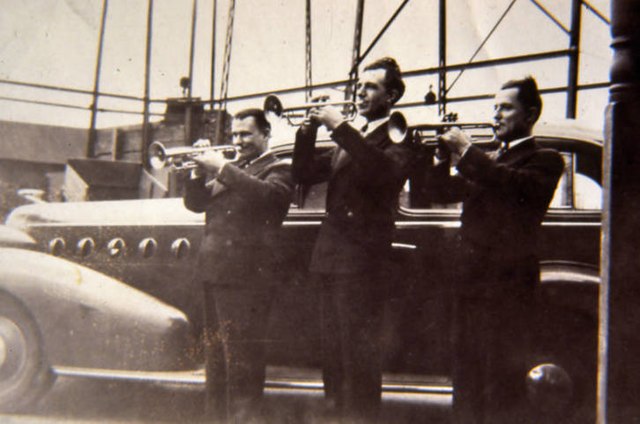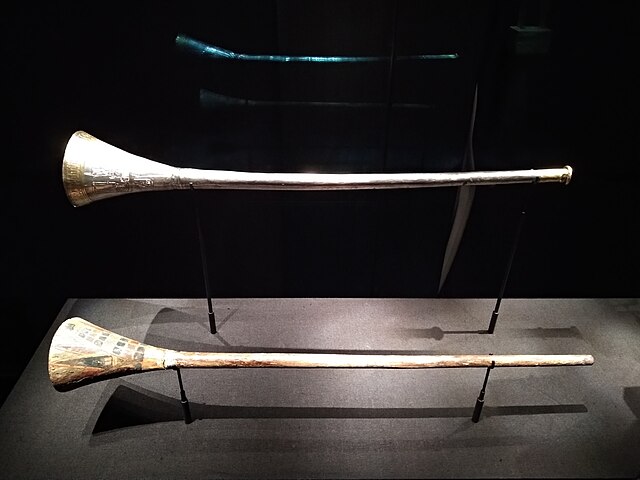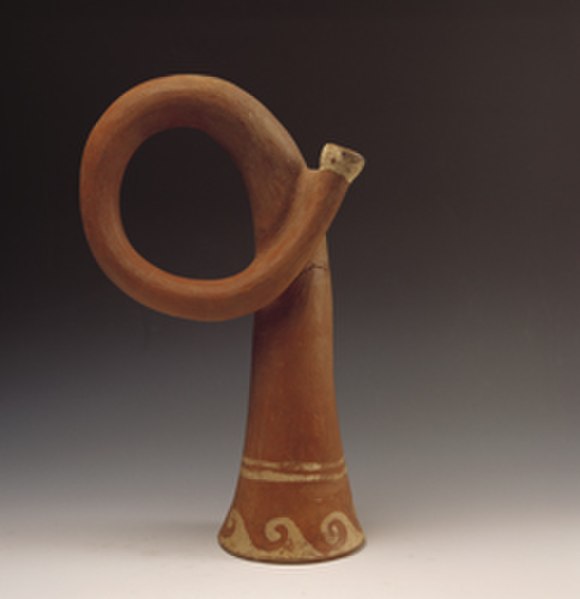John Birks "Dizzy" Gillespie was an American jazz trumpeter, bandleader, composer, educator and singer. He was a trumpet virtuoso and improviser, building on the virtuosic style of Roy Eldridge but adding layers of harmonic and rhythmic complexity previously unheard in jazz. His combination of musicianship, showmanship, and wit made him a leading popularizer of the new music called bebop. His beret and horn-rimmed spectacles, scat singing, bent horn, pouched cheeks, and light-hearted personality have made him an enduring icon.
Gillespie in New York City, c. 1947
Gillespie in a publicity photo
Gillespie with John Lewis, Cecil Payne, Miles Davis, and Ray Brown, between 1946 and 1948
Gillespie performing in 1955
The trumpet is a brass instrument commonly used in classical and jazz ensembles. The trumpet group ranges from the piccolo trumpet—with the highest register in the brass family—to the bass trumpet, pitched one octave below the standard B♭ or C trumpet.
Trumpet in B♭
Trio of trumpeters in Toledo, Ohio, approximately 1920
Silver and gold plated trumpet and its wooden mute from the tomb of Tutankhamun (1326–1336 BC)
Ceramic trumpet, AD 300, Larco Museum Collection Lima, Peru








